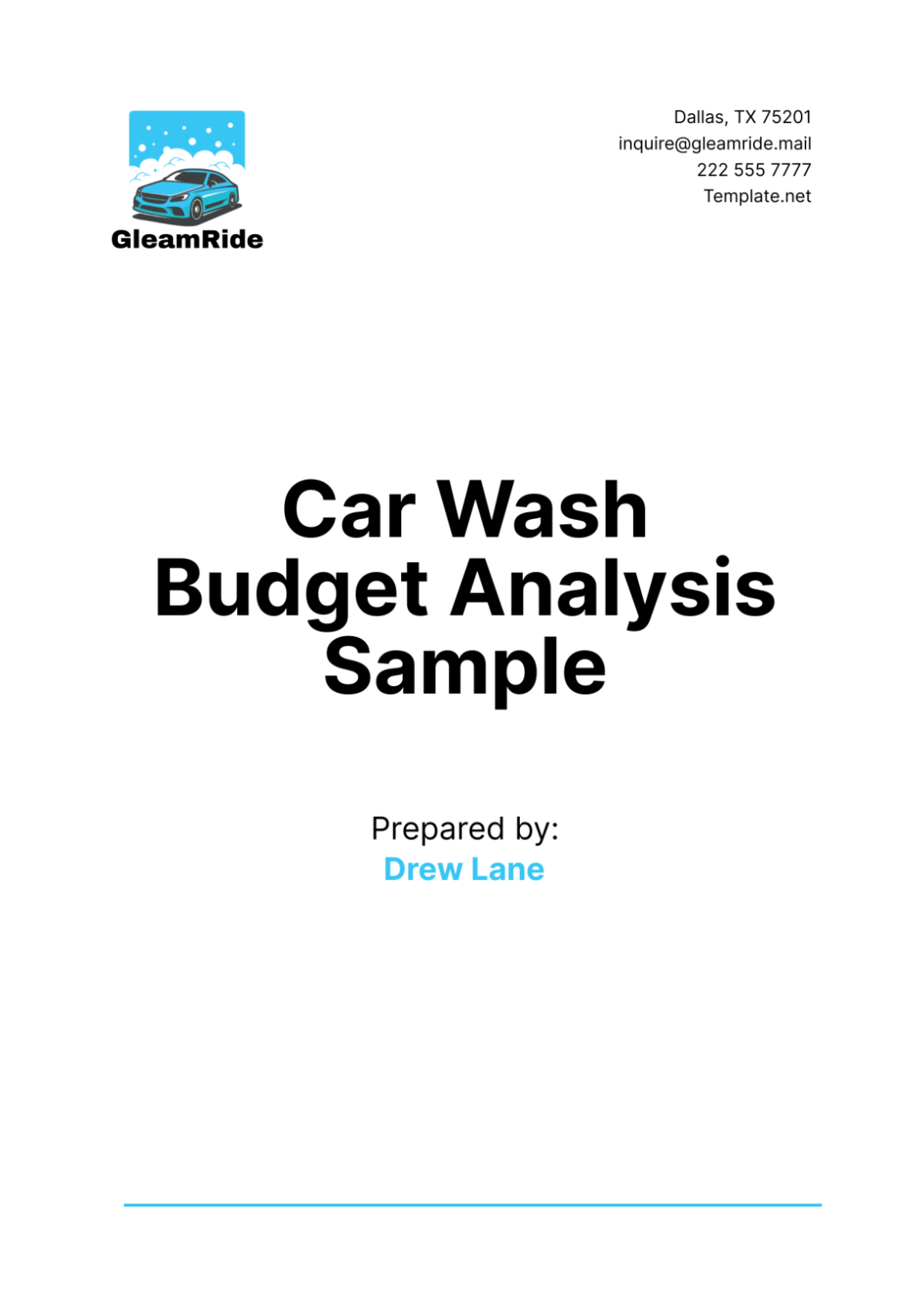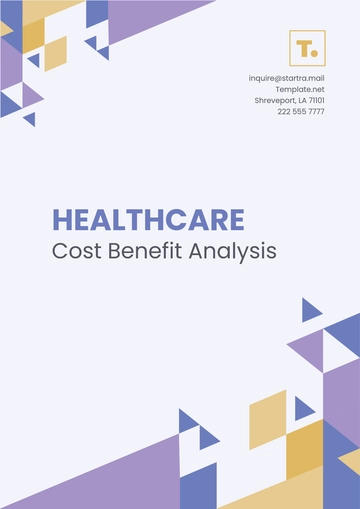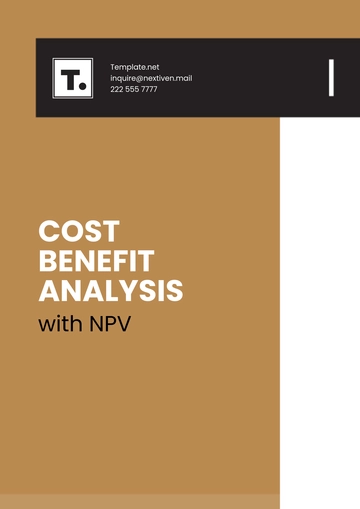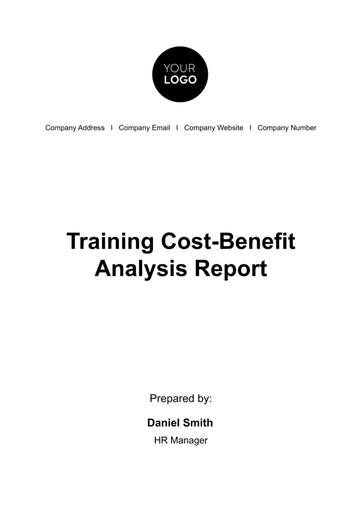Free Car Wash Budget Analysis Sample

I. Introduction
The car wash industry is a vital part of automotive care, offering essential cleaning services that cater to both individual and commercial vehicle owners. This budget analysis aims to provide a comprehensive financial overview of [Your Company Name]'s car wash operations, detailing revenue projections, costs, and financial forecasts for effective business management.
II. Revenue Projections
A. Sources of Revenue
[Your Company Name] generates revenue primarily through various services offered at its car wash facilities. The following table outlines the projected revenue streams based on service types and estimated pricing:
Service Type | Price per Service ($) | Estimated Monthly Revenue ($) | Estimated Annual Revenue ($) |
|---|---|---|---|
Exterior Wash | 15 | 6,000 | 72,000 |
Interior Detailing | 50 | 8,000 | 96,000 |
Waxing | 80 | 4,000 | 48,000 |
Additional Services | Variable | 3,000 | 36,000 |
Total | 21,000 | 252,000 |
B. Monthly Revenue Forecast
Based on the service mix and pricing strategy, [Your Company Name] anticipates steady growth in monthly revenues, as shown in the following monthly forecast table:
Month | Estimated Revenue ($) |
|---|---|
January | 21,000 |
February | 22,000 |
March | 23,000 |
April | 24,000 |
May | 24,500 |
June | 24,800 |
July | 24,900 |
August | 25,000 |
September | 25,000 |
October | 24,800 |
November | 24,500 |
December | 25,000 |
C. Annual Revenue Forecast
The annual revenue forecast consolidates the monthly projections into a comprehensive yearly outlook, highlighting expected growth and seasonal variations:
Year | Estimated Revenue ($) |
|---|---|
20XX | 252,000 |
20XX+1 | 280,000 |
20XX+2 | 310,000 |
III. Cost of Goods Sold (COGS)
A. Cost Breakdown of Cleaning Supplies
The efficient operation of [Your Company Name]'s car wash services relies significantly on quality cleaning supplies. The following table details the projected costs for essential cleaning materials:
Cleaning Supply | Unit Cost ($) | Monthly Consumption (Units) | Monthly Cost ($) | Annual Cost ($) |
|---|---|---|---|---|
Car Shampoo | 10 | 300 | 3,000 | 36,000 |
Microfiber Towels | 5 | 500 | 2,500 | 30,000 |
Wax and Polish | 15 | 100 | 1,500 | 18,000 |
Total | 7,000 | 84,000 |
B. Cost Breakdown of Water Usage
Water is a fundamental resource in car wash operations. The table below outlines the estimated water consumption and associated costs:
Water Usage Type | Unit Cost ($ per gallon) | Monthly Consumption (gallons) | Monthly Cost ($) | Annual Cost ($) |
|---|---|---|---|---|
Car Wash Operations | 0.01 | 100,000 | 1,000 | 12,000 |
Facility Maintenance | 0.02 | 50,000 | 1,000 | 12,000 |
Total | 2,000 | 24,000 |
C. Other Variable Costs
Additional variable costs, such as electricity for lighting and equipment operation, and miscellaneous expenses like disposable gloves and protective gear, contribute to the overall cost of goods sold.
IV. Operating Expenses
A. Rent or Lease Expenses
[Your Company Name] leases its car wash facilities. The monthly rental expense is a fixed cost critical to business operations and financial planning.
B. Utilities
Utility costs include a range of expenses such as electricity, heating, and cooling, which are all integral to maintaining both the operational efficiency of the car wash site and ensuring the comfort of its customers.
C. Insurance Costs
Insurance coverage encompasses several types of policies aimed at mitigating the risks associated with car wash operations. These include liability insurance, which provides protection against claims of injury or damage to third parties resulting from car wash activities. Additionally, property insurance is included, offering coverage for physical damage to the car wash premises, equipment, and other assets. Furthermore, worker's compensation insurance is part of the coverage, ensuring that employees are financially protected in the event they suffer work-related injuries or illnesses. Collectively, these insurance policies work together to safeguard the car wash business from a wide range of potential financial liabilities and operational disruptions.
V. Personnel Costs
A. Salary and Wages for Car Wash Staff
Staffing is essential to delivering quality service. The table below outlines the projected salary and wages for car wash attendants and managerial staff:
Position | Number of Staff | Monthly Salary per Staff ($) | Monthly Wages ($) | Annual Wages ($) |
|---|---|---|---|---|
Car Wash Attendant | 10 | 2,000 | 20,000 | 240,000 |
Managerial Staff | 2 | 5,000 | 10,000 | 120,000 |
Total | 30,000 | 360,000 |
B. Benefits
In order to attract and retain qualified staff, personnel costs encompass a variety of employee benefits. These benefits include health insurance, which provides medical coverage to employees, retirement plans that offer long-term financial security post-employment, and bonuses that serve as additional financial incentives. Incorporating these comprehensive benefits into personnel costs ensures that the organization remains competitive in the job market and maintains a motivated and loyal workforce.
C. Payroll Taxes
Payroll taxes, which include contributions to Social Security and Medicare, represent obligatory financial expenditures that are incurred as a result of hiring and maintaining employees at [Your Company Name].
VI. Marketing and Advertising
A. Budget Allocation for Marketing Campaigns
Marketing campaigns play a crucial role in promoting [Your Company Name]'s car wash services and attracting a steady flow of customers. The budget allocation considers various channels and strategies to maximize reach and effectiveness. The following table outlines the planned budget distribution for marketing efforts:
Marketing Channel | Budget Allocation ($) | Description |
|---|---|---|
Digital Marketing | 8,000 | Investment in online ads, SEO, social media marketing, and email campaigns to target local car owners and businesses. |
Print Media | 3,000 | Advertising in local newspapers, magazines, and direct mail campaigns to reach a broader audience. |
Promotional Events | 4,000 | Sponsorship of local events, car shows, and community gatherings to increase brand visibility and customer engagement. |
Total | 15,000 | Total budget allocated for marketing and advertising initiatives. |
B. Advertising Costs
Effective advertising is essential to communicate [Your Company Name]'s value proposition and service offerings to potential customers. The breakdown of advertising costs includes detailed strategies and estimated expenses:
Online Advertising: Utilizing platforms like Google Ads and social media platforms (Facebook, Instagram) to target specific demographics and geographical areas. Budget allocation includes campaign setup, management fees, and cost-per-click (CPC) expenses.
Print Advertising: Placing advertisements in local newspapers, automotive magazines, and community newsletters to reach a diverse audience segment. Costs cover ad space, design, and printing fees.
Promotional Events: Sponsorship and participation in local events, car shows, and community fairs to promote [Your Company Name]'s services. Expenses include booth rental, promotional materials, and giveaways.
By strategically allocating resources across these channels, [Your Company Name] aims to enhance brand awareness, drive customer acquisition, and maintain a competitive edge in the local car wash market.
VII. Maintenance and Repairs
Maintaining operational efficiency and ensuring a well-maintained facility is critical for [Your Company Name]'s car wash business. This section covers the various maintenance and repair costs associated with equipment and facilities.
A. Equipment Maintenance Costs
Regular maintenance of car wash equipment is essential to prevent downtime and ensure consistent service delivery. The following table outlines the projected costs for equipment maintenance:
Equipment | Maintenance Frequency | Annual Maintenance Cost ($) | Description |
|---|---|---|---|
Car Wash Machines | Quarterly | 5,000 | Regular servicing and repairs to maintain optimal performance and extend equipment lifespan. |
Vacuum Systems | Bi-annual | 2,000 | Inspection and maintenance to ensure efficient suction and customer satisfaction. |
Water Recycling System | Annual | 3,000 | Upkeep of water filtration and recycling systems to reduce operating costs and environmental impact. |
Total | 10,000 | Total annual expenditure on equipment maintenance and repairs. |
B. Facility Repair Costs
Facility upkeep is crucial for maintaining a clean and welcoming environment for customers. The breakdown of facility repair costs includes necessary repairs and renovations:
Structural Repairs: Addressing issues such as roofing repairs, plumbing maintenance, and structural integrity checks to ensure safety and operational continuity.
Cosmetic Enhancements: Upgrading customer waiting areas, signage, and landscaping to enhance curb appeal and customer experience.
By budgeting for regular maintenance and addressing repairs promptly, [Your Company Name] aims to minimize operational disruptions and maintain high standards of service quality.
VIII. Administrative Expenses
Administrative expenses encompass various overhead costs necessary for managing [Your Company Name]'s car wash operations efficiently.
A. Office Supplies
Office supplies are essential for daily administrative tasks and customer service operations. The following table details the projected expenses for office supplies:
Office Supplies | Monthly Budget ($) | Description |
|---|---|---|
Stationery | 200 | Pens, paper, folders, and other office essentials for administrative staff and customer use. |
Office Equipment | 300 | Computers, printers, and software licenses for efficient office management and customer transactions. |
Total | 500 | The total monthly budget allocated for office supplies and equipment. |
B. Legal and Accounting Fees
Legal and accounting services are crucial for compliance, financial reporting, and business advisory. The breakdown of fees includes:
Legal Services: Retainer fees, contract review, and legal consultations to ensure regulatory compliance and risk management.
Accounting Services: Bookkeeping, tax preparation, and financial analysis to maintain accurate records and strategic financial planning.
By investing in reliable legal and accounting support, [Your Company Name] aims to navigate regulatory requirements effectively and optimize financial performance.
IX. Capital Expenditures
Capital expenditures involve significant investments in assets that contribute to [Your Company Name]'s long-term growth and operational efficiency.
A. Initial Equipment Purchase Costs
The initial purchase of car wash equipment and technology is a critical investment. The table below outlines the projected costs for acquiring essential equipment:
Equipment | Cost ($) | Description |
|---|---|---|
Car Wash Machines | 50,000 | Purchase of high-efficiency machines capable of handling multiple vehicle types and wash options. |
Vacuum Systems | 15,000 | Installation of powerful vacuum systems to ensure thorough interior cleaning. |
Water Recycling System | 20,000 | Investment in eco-friendly technology to recycle and reuse water, reducing operational costs. |
Total | 85,000 | Total investment in initial equipment purchase to support operational capabilities. |
B. Long-term Investments
Long-term investments focus on infrastructure improvements and technological advancements to enhance service quality and customer satisfaction.
Facility Upgrades: Renovations and expansions to accommodate increased customer demand and improve operational efficiency.
Technology Integration: Implementation of automated systems and digital platforms for enhanced customer booking, payment, and feedback management.
By strategically allocating capital expenditures, [Your Company Name] aims to strengthen its competitive position and sustain long-term business growth.
X. Financial Projections
Financial projections provide insights into [Your Company Name]'s anticipated financial performance based on revenue forecasts, expenses, and investment strategies.
A. Break-Even Analysis
The break-even analysis determines the point at which [Your Company Name] covers all expenses and begins to generate profit. The following table illustrates the break-even point based on projected revenues and costs:
Break-Even Revenue: $20,000 per month
Break-Even Period: Achieved by Month 3
B. Profit and Loss Statement (P&L)
The P&L statement summarizes [Your Company Name]'s revenues, costs, and expenses during a specific period. It provides a comprehensive view of financial performance and profitability:
Total Revenue: $252,000
Total Expenses: $220,000
Net Profit: $32,000
C. Cash Flow Statement
The cash flow statement outlines [Your Company Name]'s cash inflows and outflows, ensuring sufficient liquidity for operational needs and growth investments:
Cash Inflows: $252,000
Cash Outflows: $220,000
Net Cash Flow: $32,000
Cash Position: Stable and Positive
XI. Budget Monitoring and Control
Effective budget monitoring and control mechanisms are essential for [Your Company Name] to manage financial resources efficiently and achieve business objectives.
A. Variance Analysis
Variance analysis compares actual financial performance against budgeted expectations. It helps identify discrepancies and take corrective actions promptly:
Monthly Reviews: Conducting regular reviews to analyze revenue trends, expense patterns, and operational efficiencies.
Budget Adjustments: Making informed adjustments to budget allocations based on variance analysis findings to optimize resource utilization.
B. Adjustments and Contingency Plans
Contingency plans are essential to mitigate unforeseen circumstances and maintain financial stability. Strategies include:
Emergency Funds: Establishing reserves to cover unexpected expenses or revenue shortfalls.
Scenario Planning: Developing alternative scenarios to anticipate market fluctuations and operational challenges.
By implementing robust budget monitoring practices and contingency measures, [Your Company Name] enhances financial resilience and sustainability.
- 100% Customizable, free editor
- Access 1 Million+ Templates, photo’s & graphics
- Download or share as a template
- Click and replace photos, graphics, text, backgrounds
- Resize, crop, AI write & more
- Access advanced editor
Manage your finances effectively with Template.net's customizable and editable Car Wash Budget Analysis Sample Template. Employ the Ai Editor Tool to customize this template according to your financial requirements. Create a structured budget plan that ensures financial stability and growth.





























